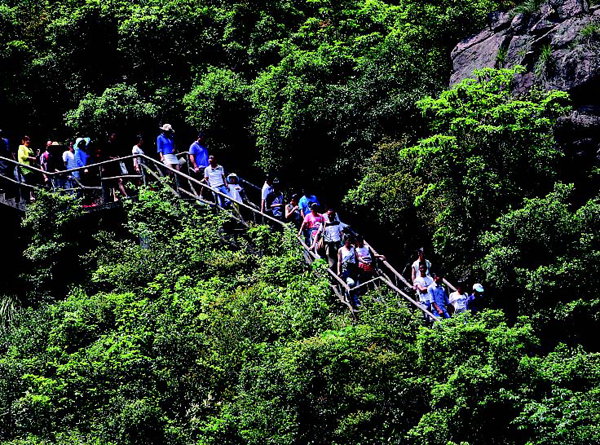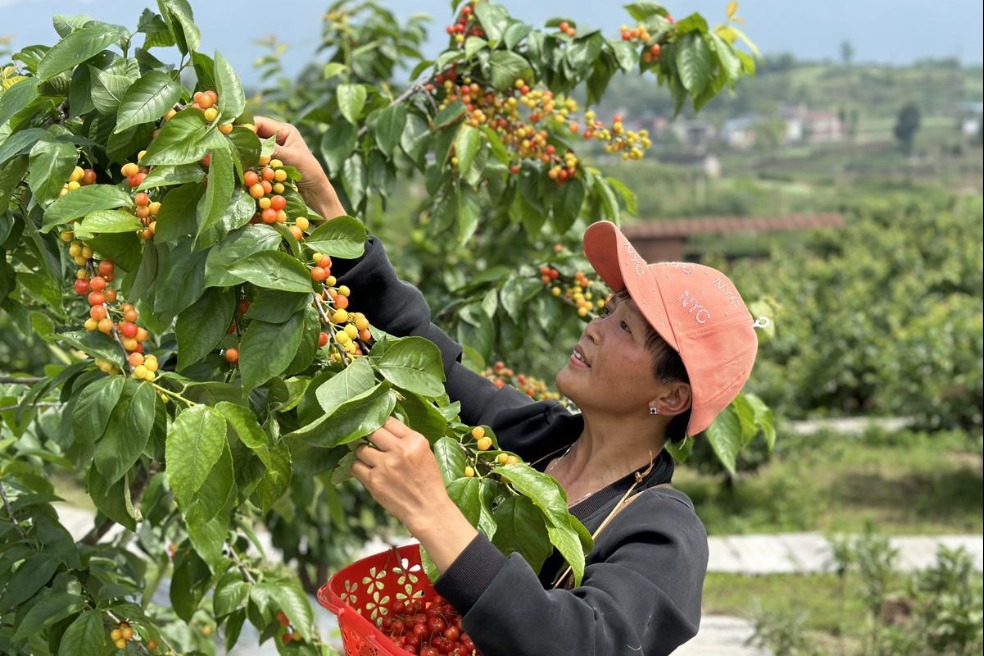Mountain climb brings clarity to life


Years ago, during the Labor Day holiday, when my mother-in-law asked me to climb a mountain in her rural Hangzhou village in Zhejiang province, it wasn't sightseeing she had in mind.
Granted, it felt like an adventure as we ascended through tall, weedy patches of grasses and vines, pulling ourselves up with the help of shaggy China firs, smooth bamboo trees and weathered gray rocks scattered along a trail only visible to a veteran hiker. The view we were rewarded with halfway up the mountain, gazing upon the colorful patchwork of fields and whitewashed homes set against the verdant hills and a sky so blue it looked digitally altered, was just a benefit of being there.
After all, our eyes were mostly fixed on the ground instead, in search of the real purpose for our journey - the wild edible plants that thrived on the mountainside.
We first came upon wild mountain bamboo, a smaller variety of bamboo with clusters of slender shoots that grew shorter than my own knee. This tender plant was the main ingredient in my mother-in-law's salted bamboo shoots that, once preserved, could be used all year long in stir-fries and stews. Up to that moment, when I was helping my mother-in-law harvest the shoots, I had never realized that preparing this important kitchen staple actually required an annual trek to the woods.
But along the way, we also encountered another precious wild food - fiddlehead ferns. Those delicate, curled fronds had often appeared on my mother-in-law's table, stir-fried with fragrant ginger, garlic and green peppers. Once I had actually purchased fiddleheads at a specialty market in the United States, at a premium. Yet there we were, plucking this prized vegetable on our own, with only our labor as the cost.
What we had collected that afternoon looked the same as any other wild mountain bamboo shoots and fiddlehead ferns I had glimpsed before in my mother-in-law's kitchen. And yet, they felt different to me because I had used my own hands to help pick them and carry them back down the mountain. Spending time and energy to gather these wild plants had given me a deeper appreciation for the food that ends up on the dinner table.
It also made me more aware of the powerful connection among the natural world, food and life, symbolized by my mother-in-law. Living in the city, it's so easy to forget that we all depend on the environment to sustain us - that the green mountains and blue rivers matter as much to our survival as supermarkets and shops. But my mother-in-law tends her own garden and sustainably forages the surrounding area for wild edible plants, a natural lifestyle that many people like her have kept for generations. Those mountains and rivers supporting her life weren't some abstract concept. They were right there, outside her door and within her rural village. And once I saw them through her perspective that afternoon, I realized they were closer to me than I ever imagined.
- Eight dead after minibus collision
- Chinese PLA navy to celebrate 75th founding anniversary with series of events
- Student detained on suspicion of the death of his roommate
- Smart teaching system launched for international Chinese learning
- Shanghai prepares to open parks 24 hours a day
- Action taken over Chongqing Gas Group overcharging



































